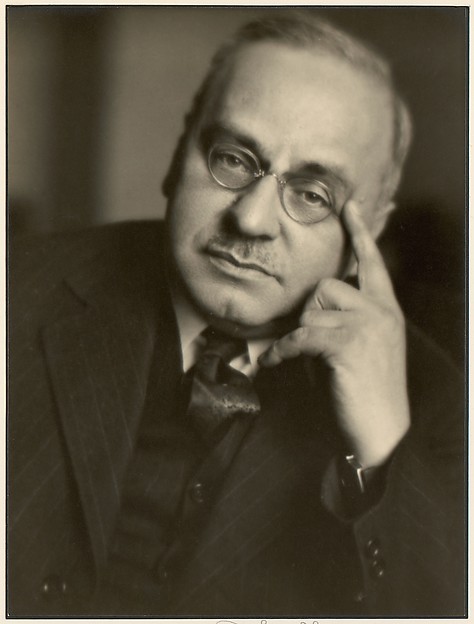
Alfred Adler (1870-1937)
Founder:
Goals of Therapy:
The main goal with the Alderian therapist is to develop a client's sense of belonging. This is accomplished by increasing the client's self-awareness. The analyst also wants to modify the client's life goals and concepts, doing this helps the client become more self-aware. The analyst's goal also consists of gaining a relationship with their client based on a mutual respect for one another. Alderian analyst do NOT view their clients as being "sick" and in need of a "cure". Rather than being deemed sick Alderian analyst consider their clients as simply discouraged. An Alderian analyst thinks that encouragement is the most powerful way to change a person's beliefs. This helps build a client's self-confidence and courage.

Techniques:
Alderian therapists allow their client's to view things through a different perspective, however it is left up to the client to decide whether to act on this alternate perspective. Therapists work with their clients to try to help them reach goals. Therapists will gather information on a client's style of living including family information. This will give the therapist a perspective on the client's success and failures. The therapist will also use what is called early recollections (stories or events that occurred in the client's life before the age of 10). These can be very useful in getting to know the client. After the early recollections are gathered the therapist can interpret some major successes and mistakes the client may have. The process of gathering all of this early life information is called a lifestyle assessment. This helps the therapist learn goals and produce targets for the therapy. The Alderian approach is structured into four central objectives:
- Establish a proper therapeutic relationship
- Explore psychological dynamics (assessment)
- Encourage the development of self-understanding
- Help the client make new choices
Overall the Alderian therapists strives to make a difference in the client's life.
Key Concepts:
- View of Human Nature: Focuses of the person's past, how early events effect a person's present behavior.
- Subjective Perception of Reality: Analyst view the world from the client's perspective, known as phenomenological. This is referred to as subject reality.
- Unity and Patterns of Human Personality: Adler stressed understanding the person as a whole and the context of his or her life.Influenced by Hans Vaihinger (1965) who notes that many people live by falseness. Alderians use the term fictional finalism to refer to this imagined life goal that guides a person's behavior.
- Social Interest and Community Feeling: Individual's awareness of being part of the human community and their attitudes with dealing with the social world.
- Birth Order and Sibling relationships: Special attention to the relationships between siblings.
| POSITION | FAMILY SITUATION | CHILD'S CHARACTERISTICS |
|---|---|---|
| ONLY | Birth is a miracle. Parents have no previous experience. Retains 200% attention from both parents. May become rival of one parent. Can be over-protected and spoiled. | Likes being the center of adult attention. Often has difficulty sharing with siblings and peers. Prefers adult company and uses adult language. |
| OLDEST | Dethroned by next child. Has to learn to share. Parent expectations are usually very high. Often given resposnsibility and expected to set an example. | May become authoritarian or strict. Feels power is his right. Can become helpful if encouraged. May turn to father after birth of next child. |
| SECOND | He has a pacemaker. There is always someone ahead. | Is more competitive, wants to overtake older child. May become a rebel or try to outdo everyone. Competition can deteriorate into rivalry. |
| MIDDLE | Is "sandwiched" in. May feel squeezed out of a position of privilege and significance. | May be even-tempered, "take it or leave it" attitude. May have trouble finding a place or become a fighter of injustice. |
| YOUNGEST | Has many mothers and fathers. Older children try to educate him. Never dethroned. | Wants to be bigger than the others. May have huge plans that never work out. Can stay the "baby." Frequently spoiled. |
| TWIN | One is usually stronger or more active. Parents may see one as the older. | Can have identity problems. Stronger one may become the leader. |
| "GHOST CHILD" | Child born after the death of the first child may have a "ghost" in front of him. Mother may becime over-protective. | Child may exploit mother's over-concern for his well-being, or he may rebel, and protest the feeling of being compared to an idealized memory. |
| ADOPTED CHILD | Parents may be so thankful to have a child that they spoil him. They may try to compensate for the loss of his biological parents. | Child may become very spoiled and demanding. Eventually, he may resent or idealize the biological parents. |
| ONLY BOY AMONG GIRLS | Usually with women all the time, if father is away. | May try to prove he is the man in the family, or become effeminate. |
| ONLY GIRL AMONG BOYS | Older brothers may act as her protectors. | Can become very feminine, or a tomboy and outdo the brothers. May try to please the father. |
| ALL BOYS | If mother wanted a girl, can be dressed as a girl. | Child may capitalize on assigned role or protest it vigorously. |
| ALL GIRLS | May be dressed as a boy. | Child may capitalize on assigned role or protest it vigorously. |
*(Thanks to http://www.adlerian.us/birthord.htm)
Suggested Links
(courtesy of Gerald Corey from Theory and Practice of Counseling and Psychotherapy)
No comments:
Post a Comment